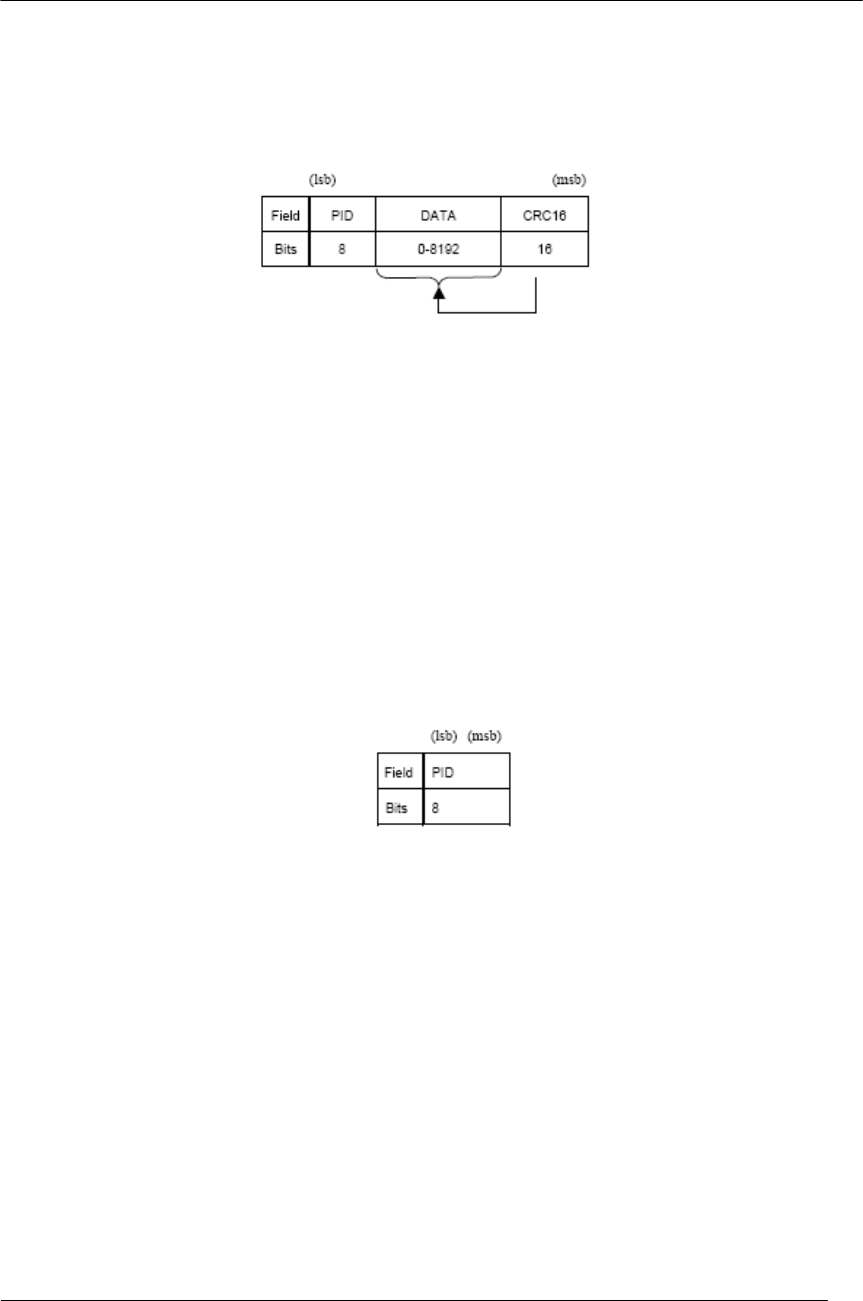
Spinpoint M8U-Internal Product Manual REV 3.4
52
INSTALLATION
6.3.3.2 Data Packet
A data packet consists of a PID, a data field containing zero or more bytes of data, and a CRC as shown in
Figure 6-19. There are four types of data packets, identified by differing PIDs: DATA0, DATA1, DATA2
and MDATA. Two data packet PIDs (DATA0 and DATA1) are defined to support data toggle
synchronization. All four data PIDs are used in data PID sequencing for high bandwidth high-speed
isochronous endpoints. Three data PIDs (MDATA, DATA0, DATA1) are used in split transactions.
Figure 6-19: Data Packet Format
Data must always be sent in integral numbers of bytes. The data CRC is computed over only the data field
in the packet and does not include the PID, which has its own check field.
The maximum data payload size allowed for low-speed devices is 8 bytes. The maximum data payload size
for full-speed devices is 1023. The maximum data payload size for high-speed devices is 1024 bytes.
6.3.3.3 Handshake Packet
Handshake packets, as shown in Figure 6-20, consist of only a PID. Handshake packets are used to report
the status of a data transaction and can return values indicating successful reception of data, command
acceptance or rejection, flow control, and halt conditions. Only transaction types that support flow control
can return handshakes. Handshakes are always returned in the handshake phase of a transaction and may be
returned, instead of data, in the data phase. Handshake packets are delimited by an EOP after one byte of
packet field. If a packet decodes as an otherwise valid handshake but does not terminate with an EOP after
one byte, it must be considered
invalid and ignored by the receiver.
Figure 6-20: Handshake Format
There are four types of handshake packets and one special handshake packet:
ACK indicates that the data packet was received without bit stuff or CRC errors over the data field and that
the data PID was received correctly. ACK may be issued either when sequence bits match and the receiver
can accept data or when sequence bits mismatch and the sender and receiver must resynchronize to each
other. An ACK handshake is applicable only in transactions in which data has been transmitted and where a
handshake is expected. ACK can be returned by the host for IN transactions and by a function for OUT,
SETUP, or PING transactions.
NAK indicates that a function was unable to accept data from the host (OUT) or that a function has no
data to transmit to the host (IN). NAK can only be returned by functions in the data phase of IN
transactions or the handshake phase of OUT or PING transactions. The host can never issue NAK.
NAK is used for flow control purposes to indicate that a function is temporarily unable to transmit or
receive data, but will eventually be able to do so without need of host intervention.
STALL is returned by a function in response to an IN token or after the data phase of an OUT or in
response to a PING transaction. STALL indicates that a function is
unable to transmit or receive data, or that a control pipe request is not supported. The state of a
function after returning a STALL (for any endpoint except the default endpoint) is undefined. The host
is not permitted to return a STALL under any condition.


















